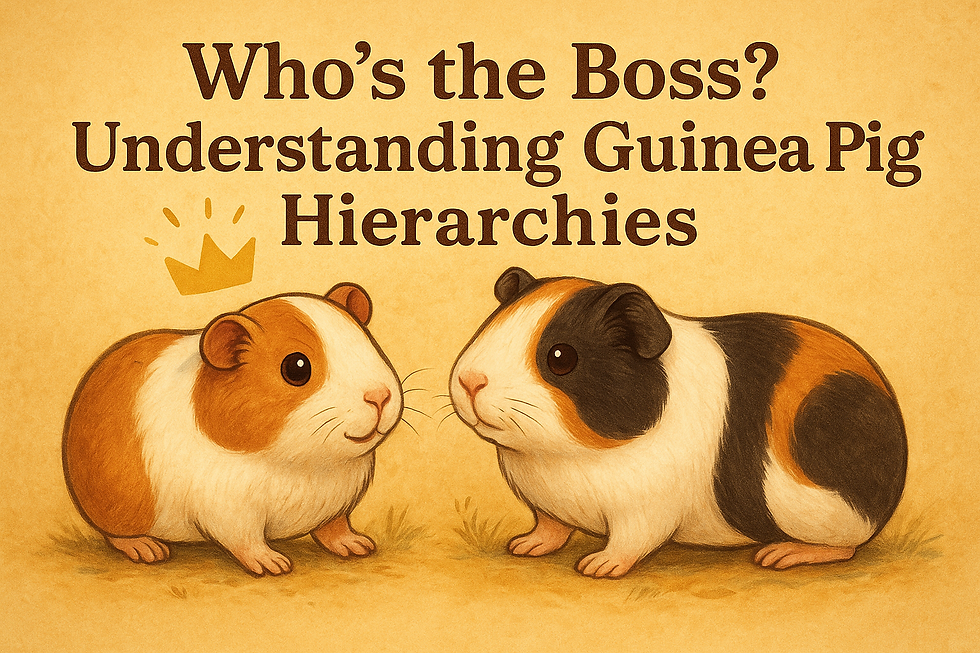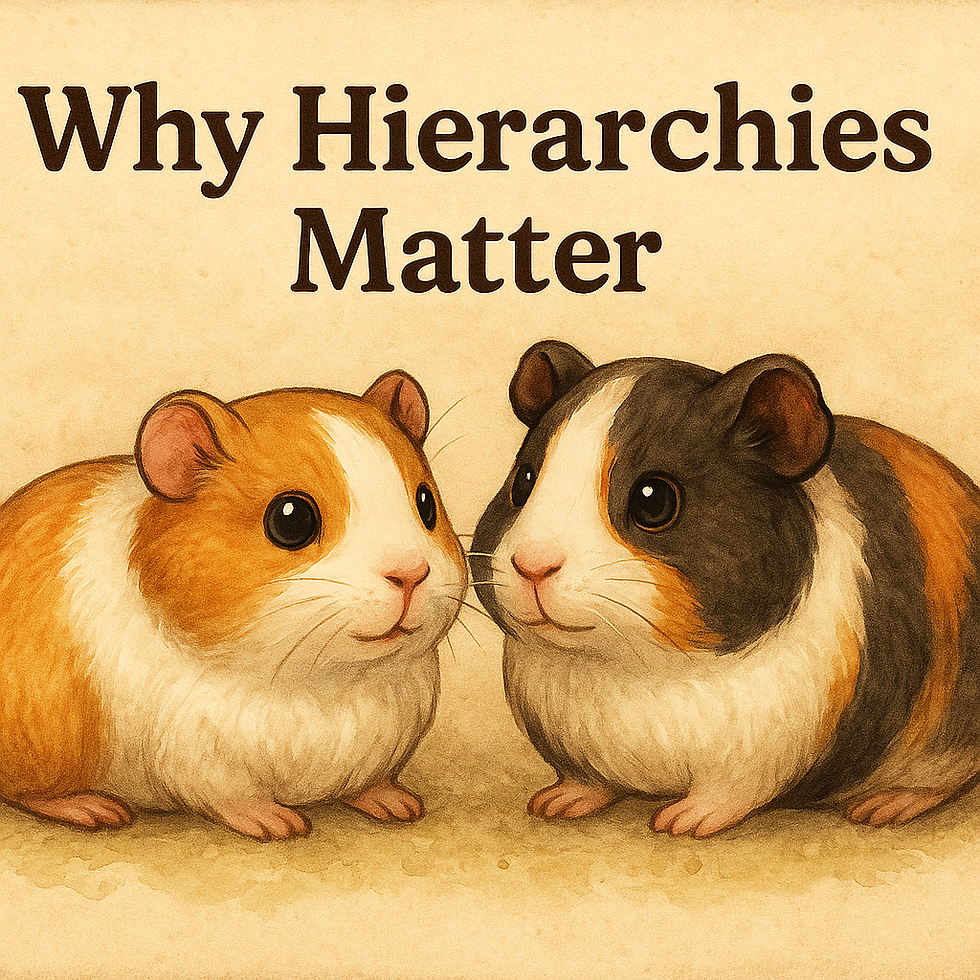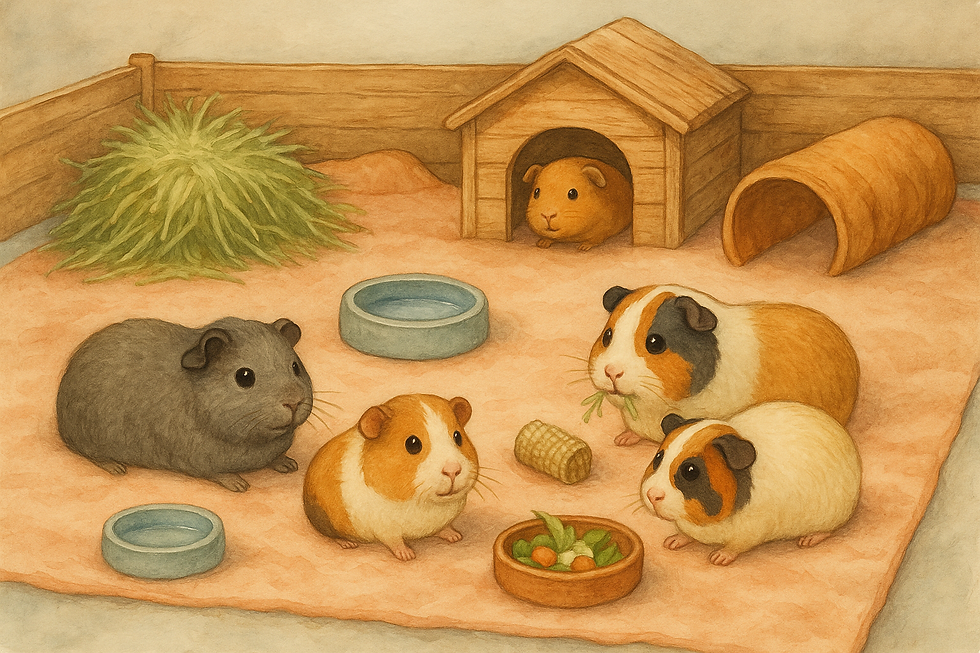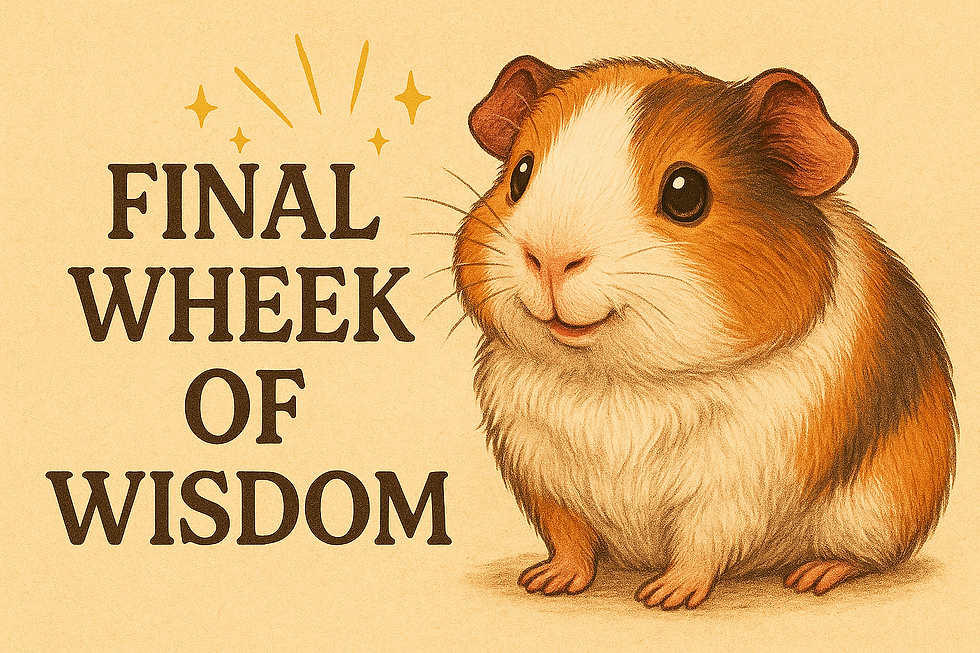👑 Who’s the Boss? Understanding Guinea Pig Hierarchies
- Sarah Robarge

- Jul 9
- 2 min read

So your guinea pigs are rumbling, chasing, and acting like dramatic little soap opera stars. Are they fighting? Are they bonding? Are they… auditioning for Survivor: Cavy Edition?
Welcome to the complex (and often misunderstood) world of guinea pig hierarchies.

Why Guinea Pig Hierarchies Matter
Guinea pigs are highly social animals with built-in group dynamics. When you put two or more piggies together, they’ll naturally establish a pecking order—even if they’re best friends.
The goal? A peaceful, structured herd with one clear leader.

Dominance Behavior: What’s Normal?
These behaviors are common, especially during introductions, puberty, or when a new cage setup changes the vibe:
Rumblestrutting – That slow-mo swagger + rumble sound? Total boss move.
Mounting – Not always sexual; it’s often about asserting dominance.
Chasing – A mild chase is normal, especially in younger or same-sex pairs.
Nipping – Gentle nips to say “back off,” usually without fur or blood.
Nose-offs – Two pigs stand nose to nose to size each other up.
As long as there’s no blood, injury, or prolonged stress, these behaviors are usually harmless.

Heat Cycles and Hormonal Hijinks
When a female guinea pig goes into heat (about every 15–17 days), dominance behaviors can spike temporarily, even in stable pairs or groups.
You might notice:
Increased mounting, even between bonded females
Rumblestrutting or chasing from the usually “chill” pig
More vocalizations or restlessness
Temporary shifts in who’s acting like the boss
It’s totally normal and usually passes within a few hours. But if the behavior seems too intense or lasts longer than a day, it’s worth observing more closely.
Watch out for:
Heat-triggered fights in previously peaceful pairs
Possible signs of ovarian cysts in older females (like hair loss, aggression, or prolonged heat behaviors)
💡 Tip: Clean cage accessories often to avoid hormone-scent buildup that could trigger confusion or tension—especially in all-female herds.

When to Worry: Signs of Real Conflict
Sometimes, dominance can cross into danger. Watch for:
Persistent lunging or biting
Fur-pulling or bloody wounds
One pig constantly hiding, losing weight, or missing meals
Loud, angry teeth chattering (versus curious clicking)
Escalating aggression that doesn’t calm after a few days
If you see these signs, separate immediately and consider a slow rebonding process, or side-by-side living.

Setup Matters: Reduce Tension With Smart Housing
A few tweaks to your setup can make a big difference:
Double everything – Water bottles, hay piles, hideouts
No single-entry hideys – Choose open-ended tunnels or shelters with two exits
Big cage = less drama – More space means fewer squabbles

Do Dominant Pigs Love You Less?
Not at all! The dominant pig isn’t mean—they’re just the one making the rules. Once hierarchy is settled, even bossy pigs can be total snuggle bugs.

Final Wheek of Wisdom
Piggy power struggles are normal—but understanding the difference between dominance and danger can keep your herd safe and happy. Respect their social rituals, watch for red flags, and know when to step in.
Because in the world of guinea pig hierarchies, peace isn’t the absence of rumble—it’s knowing who gets the best lettuce first.





Comments